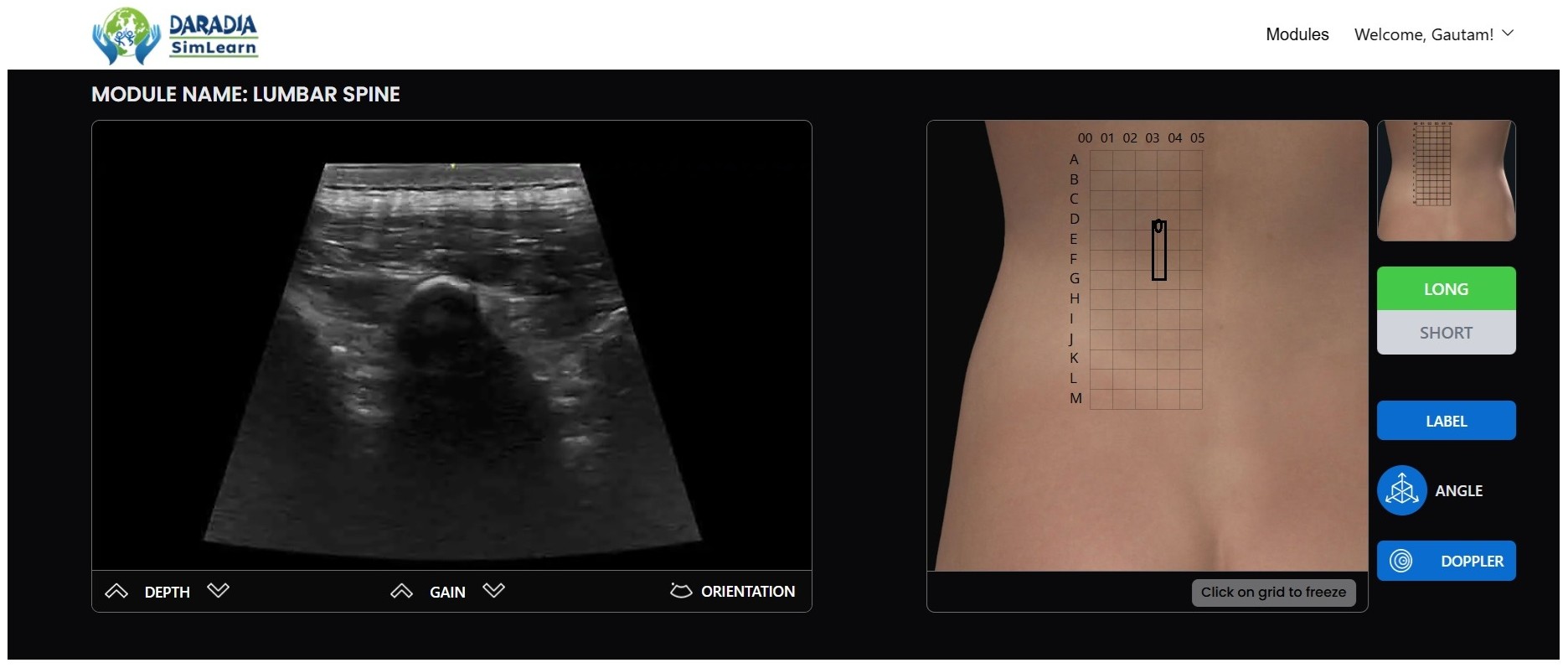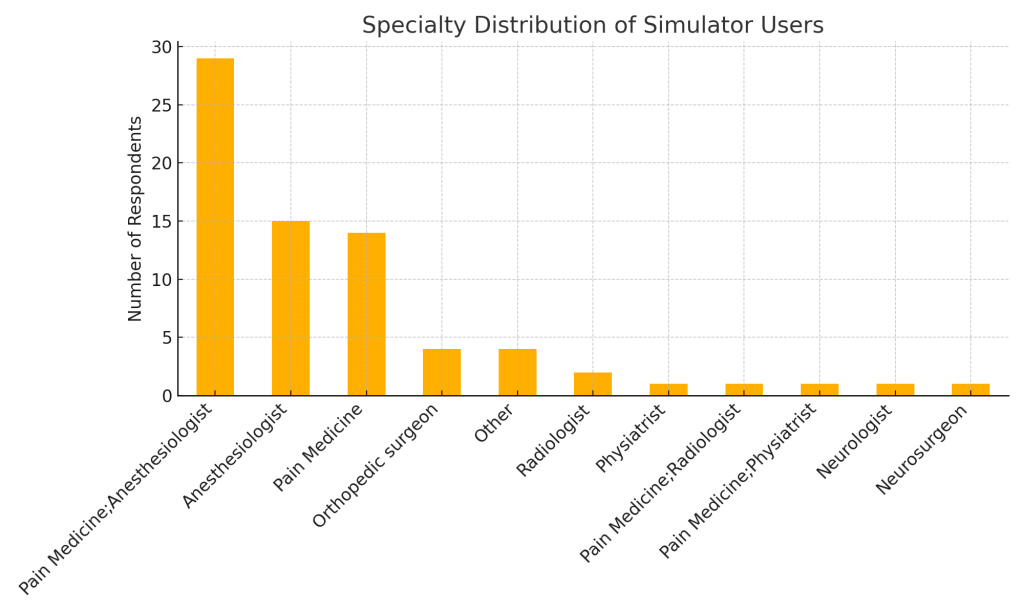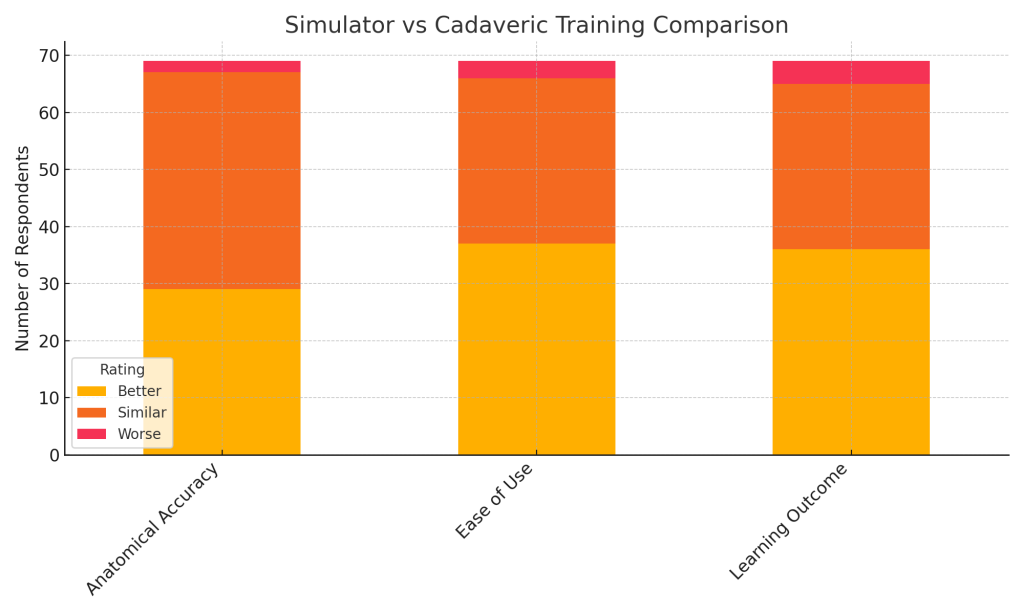MSK Ultrasound Simulator: Survey Reveals It Matches Cadaver Training

Introduction: The Changing Landscape of Ultrasound Training
Ultrasound-guided interventions have become an essential skill in pain medicine. Traditionally, mastering musculoskeletal (MSK) ultrasound techniques required in-person cadaveric workshops, supervised patient scanning, or hands-on sessions with volunteers. While invaluable, these training modalities have their own limitations: high cost, limited availability, radiation risks (in some hybrid imaging modules), and ethical concerns.
In response to these challenges, Daradia – a leading name in pain medicine education – has developed a web-based Musculoskeletal Ultrasound (MSK USG) Simulator. This radiation-free, cadaver-free, anytime-accessible platform provides realistic imaging, anatomy correlation, and procedural orientation to physicians around the globe. But how well does it work?
To evaluate its real-world usefulness, we invited physicians to try the simulator and participate in a feedback survey. The response was overwhelming, and the early data speaks volumes.
Who Took the Survey?
The initial phase of this study analyzed responses from 73 physicians. Here’s a snapshot of who they were:
- 92% had prior hands-on training on cadavers, volunteers, or live patients.
- Most participants were practicing pain physicians, anesthesiologists, or fellows in training.
- Physicians represented a wide geographic distribution, reflecting varying access to traditional ultrasound training.
- Experience levels ranged from less than 1 year to over 5 years in MSK ultrasound.
This diversity ensured a well-rounded evaluation of the simulator across both seasoned and newer users.

What the Data Says: A Summary of Key Findings
🔹 Ease of Use
Most users found the simulator intuitive and easy to navigate:
- Average rating for ease of use: 8.4/10
- Users appreciated the simple interface, responsive controls, and clear instructions.
🔹 Realism of Images
- The simulator’s sonoanatomy was rated 8.5/10 on average.
- Many noted that the image quality was close to what they saw in real cadaver labs or live patients.
🔹 Learning Outcome
When asked to compare the simulator to cadaveric/volunteer training:
- 91% rated the simulator equal to or better in terms of learning outcome.
- In terms of confidence in performing ultrasound-guided procedures, the simulator received a mean score of 8.6/10.
🔹 Recommendation for Standard Training
- An overwhelming 96% said that this simulator should be included in standard MSK ultrasound training curricula.
- The ability to practice without geographical or scheduling barriers was seen as a game-changer.

Top Advantages Identified by Physicians
From the open-ended feedback, a few themes stood out:
✅ Anytime, Anywhere Access
“I could practice late at night or early in the morning. That’s not possible with cadaver labs.”
✅ Repetition Without Limitations
“Being able to scan the same part over and over without worrying about patient discomfort was invaluable.”
✅ Clear Anatomical Correlation
“The simulator helped me correlate textbook anatomy with sono images better than a single cadaver session.”
Challenges Faced and Suggested Improvements
Not all feedback was glowing – and that’s a good thing. It helped us identify areas to improve.
🔹 Loading Speed
Several users reported that image loading was slow, especially with weaker internet connections.
🔹 User Interface Enhancements
Requests included:
- More dynamic probe movements (e.g., tilting, rotating)
- Ability to label structures interactively
- Short embedded video guides for anatomical landmarks
We’re actively incorporating this feedback into the next development cycle.
Why This Matters: A Case for Democratizing Medical Education
Cadaver labs and in-person ultrasound workshops are often expensive, logistically difficult, and inaccessible to many physicians – particularly in low- and middle-income countries. The Daradia MSK USG Simulator represents more than a digital learning tool; it’s an equity enabler.
With unlimited, self-paced access, even physicians in remote areas can now develop skills previously dependent on institutional access. The positive survey data not only validates the simulator’s effectiveness but also marks a shift in how interventional pain education can be scaled globally.
“Simulation is no longer just an alternative – it’s an essential bridge to equitable education for pain physicians worldwide.”
Want to Experience It Yourself?
If you haven’t tried it yet, you can explore the MSK Ultrasound Simulator today. It’s free to test, user-friendly, and designed by pain physicians who understand what learners really need.
🔗 Try Now: https://daradiasimlearn.com
Help Us Improve Further
Your feedback drives our development. If you’ve used the simulator, please take 2 minutes to share your experience.
📋 Take the Survey: https://forms.gle/ZeA82f7cJ6TVz9ww9
Read the Full Story and User Insights
Want to explore more about the findings and our development journey?
📚 Read our LinkedIn article:
From Cadaver Labs to the Cloud – Full Article
Conclusion
The initial feedback from our survey is not just encouraging – it’s transformational. Simulation-based training is poised to become a core element of MSK ultrasound education, and Daradia is proud to be leading this transition.
Join us in reshaping the future of pain education, one virtual scan at a time.

